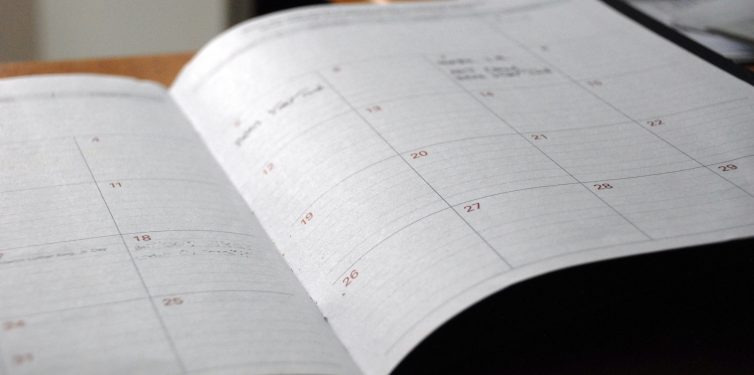Set Students Up for Success
The strategic calendar system helps students manage the academic, extracurricular, familial, and work demands on their time. This system encourages students to plan ahead and think flexibly about efficient time management. Also, it combines practice for short and long-term planning with time estimation.
In order for students to successfully implement the strategic calendar system, teachers must set students up for success by:
- Offering structured class time for students to get organized
- Posting and referencing a daily agenda and preparing students for changes to the routine
- Providing a detailed syllabus for older students
- Giving plenty of notice about tests and projects and supporting students to plan accordingly
- Soliciting feedback on what strategies are working, what tools are not working, and providing suggestions for improvements
The strategic calendar system has three key components: a 12-month calendar, an assignment notebook, and a daily schedule and task sheet.
Part 1: 12-Month Calendar
The 12-month calendar is a one-page-per-month calendar with days and dates clearly labeled. Students note everything that places demands on their time on this calendar, excluding their daily homework. The calendar provides a structure for students to balance extracurricular activities and family responsibilities with their homework, which goes in the homework assignment book.
How to implement it: At the beginning of the school year, then at least monthly, students write all tasks that put demands on their time in the monthly calendar, in addition to other obligations or special circumstances that relate to their schedules. When a test, paper, or other project is assigned ahead of time, students note its due date on their calendars.
Part 2: Homework Assignment Notebook
The homework assignment book is used for recording each subject’s daily homework, and it also provides extra space to note other tasks. It should have adequate space for students to write down complete assignments.
How to implement it: Students transfer all obligations from their monthly calendar to the corresponding dates in the homework assignment notebook whenever they update their calendars. On a daily basis, students record their homework and the time they estimate it will take them in the assignment book. Teachers should write the homework in the same space on the board every day and prompt students to record it, giving them time to write it down at the start or the end of the class. If there is no homework, students should write “no homework” or draw a line through the box to prevent uncertainty rather than leave the block blank. Students then time their homework and note the actual time next to the time they estimated when the assignment was given. They also choose a system for marking off each assignment after they finish it. Whether they cross it out, write a check mark beside it, or sign it, they get the visual satisfaction of a task completed. Teachers can check students’ homework assignment notebooks on a daily basis or have students check each other’s for accuracy. For younger students and students having difficulty using the assignment notebook, teachers can ask a parent or guardian to check the book every night and sign it.
The assignment notebook is a beneficial tool even if homework is posted electronically on a learning management system, such as Google Classroom. The assignment notebook provides students with a list of “to-do” items each night. Rather than spending time visiting every class within their Google Classroom, students can open their assignment notebooks and trust they have a complete list of what they need to complete.
Part 3: Daily Schedule and Task Sheet
The daily schedule and task sheet (attached below) provide a set location for students to write down everything they must accomplish on a given day. Students use the sheet’s time blocks to identify when they will complete each task. Regular use helps students establish routines and make better use of their time. Some students find they have more time than they thought, while others get visual evidence that they are overcommitted. A daily schedule and task list is a good way for students to begin assessing what is reasonable to accomplish.
How to implement it: On a daily basis, students record what they must accomplish the next day and how they will use their time. Students consider daily routines that require time (showering, eating, traveling, etc.), scheduled activities, and time for homework. Note that homework time can vary quite a bit from day to day. After students plan their next day using the calendar and daily schedule, they should compare the time estimates they made for the current day’s homework with their actual time. They may find that adjustments to their schedules are required. On a weekly basis, students evaluate the previous week’s time management and use the information to plan their coming week using the daily schedule and task list.
The daily schedule and task sheet may feel like an “extra step,” particularly for students with executive function (EF) challenges. However, with explicit guidance from teachers, practicing and using the daily schedule and task sheet for a period of time can help students with EF challenges build their task analysis and time estimation skills. As students demonstrate a better understanding of time management and gain independence, the daily schedule and task sheet may no longer be needed.



